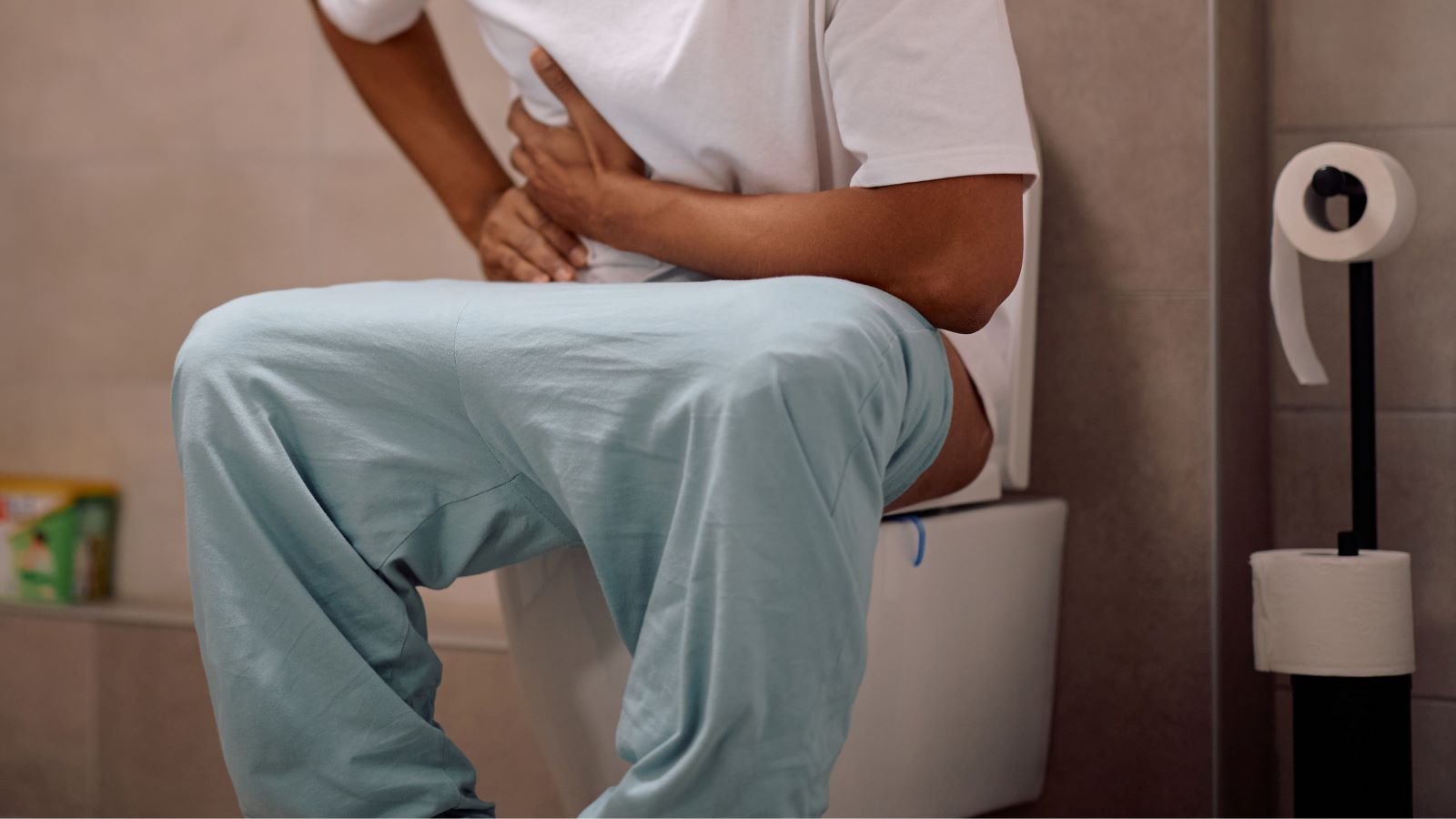<< Back
8 Reasons Why There Might Be Blood in Your Stool

November 05, 2025
Whether you spot it on the toilet paper or in the bowl, finding blood in your stool can be alarming. But before you panic, it’s important to know what it could actually mean — and not all causes are serious.
“Blood in the stool can come from many different sources,” says Neil Parikh, MD, a gastroenterologist with Hartford HealthCare’s Digestive Health Institute. “The key is to pay attention to what you’re seeing and get checked out if it doesn’t go away.”
Here are eight reasons you might notice blood in your stool – and when to take it seriously.
1. Hemorrhoids
Let’s start with the most common and least scary cause. Hemorrhoids are swollen veins in your rectum or anus that can bleed, especially when you strain during bowel movements.
“You’ll usually see bright red blood on the toilet paper or in the bowl,” says Dr. Parikh. “It’s often just a streak or a small amount and not mixed into the stool itself.”
To help, try increasing your fiber intake, drinking more water, and avoiding long periods on the toilet. Regular exercise and over-the-counter creams can also relieve discomfort and reduce swelling.
> Related: 4 Ways to Ease Hemorrhoids at Home
2. Anal fissures
A tiny tear in the lining of your anus might not sound like a big deal, but it can be painful — and cause noticeable bleeding.
“This often happens if you’re constipated or passing hard stools,” Dr. Parikh explains. “You might see a few drops of bright red blood and feel a sharp, burning pain.”
Warm baths, stool softeners, and topical creams can often help these heal on their own. Try to keep your stools soft by staying hydrated and adding more fruits, vegetables, and whole grains to your diet.
> Related: 6 Signs It’s Time to See a Doctor For Your Stomach Issues
3. Diverticulosis
Diverticulosis occurs when small pouches form in the walls of your colon. These pouches can sometimes bleed, leading to dark red or maroon-colored stool.
“This bleeding is usually painless but can be quite noticeable,” says Dr. Parikh. “Even if it stops on its own, it’s important to let your doctor know, because it could happen again.”
You can help prevent flare-ups by eating a high-fiber diet, staying well-hydrated, and avoiding smoking. Regular colon screenings can also help your doctor monitor your digestive health.
> Related: What You Need to Know About Diverticulitis
4. Polyps or colorectal cancer
Here’s where things can get more serious. Polyps — small growths in your colon — can sometimes bleed. Over time, some types can develop into colorectal cancer.
“You may not see bright red blood,” says Dr. Parikh. “It’s often darker or hidden in the stool, which is why screening is so critical.”
Be sure to stay up to date on your colonoscopy once you’re over 45 (or earlier if you’re at high risk). If you notice persistent changes in your bowel habits or unexplained fatigue, talk with your doctor right away.
5. Inflammatory bowel disease (IBD)
Conditions like Crohn’s disease and ulcerative colitis can inflame your digestive tract and cause bleeding, diarrhea and abdominal pain.
“The bleeding may be mixed with mucus or occur alongside cramping,” says Dr. Parikh. “These symptoms tend to come and go, but they shouldn’t be ignored.”
If you’re diagnosed with IBD, follow your treatment plan closely and keep a symptom diary to share with your doctor. A balanced diet and stress management can also help reduce flare-ups.
> Related: What Your Stomach Pain Is Trying to Tell You
6. Peptic ulcers
If bleeding is coming from higher up in your digestive system — say, from an ulcer in your stomach or small intestine — your stool might appear black or tarry.
“This darker color means the blood has traveled farther through the digestive tract,” Dr. Parikh explains. “That’s a red flag that needs medical attention.”
Avoid alcohol, smoking, and overuse of pain relievers, which can irritate ulcers. If you suspect one, see your provider — medications can help your stomach heal and prevent complications.
> Related: 7 Symptoms of a Stomach Ulcer
7. Gastrointestinal infections
Certain bacterial infections, such as E. coli or Salmonella, can cause inflammation and bleeding in your intestines.
“These cases often come with other symptoms like cramping, fever and diarrhea,” says Dr. Parikh. “If you have those and notice blood, contact your provider right away.”
Stay hydrated and rest while your body recovers, and avoid foods that can worsen symptoms, like dairy or greasy meals. Practicing good food safety habits can help prevent future infections.
8. Medication side effects
Some medications — like blood thinners, aspirin or nonsteroidal anti-inflammatory drugs (NSAIDs) — can irritate your stomach or intestines and cause bleeding.
“If you’re taking these and notice any blood in your stool, call your doctor,” Dr. Parikh says. “Sometimes adjusting the dose or switching medications can solve the problem.”
> Related: I Have Blood in My Stools — Should I See a Doctor?
Here’s when it’s time to see your doctor
If you notice blood in your stool more than once, if it’s dark or tarry, or if you have other symptoms like pain, weight loss or fatigue — don’t wait.
“It’s always better to find out early what’s causing it,” says Dr. Parikh. “Even if it turns out to be something minor, you’ll have peace of mind. And if it’s something more serious, catching it early can make a big difference.”